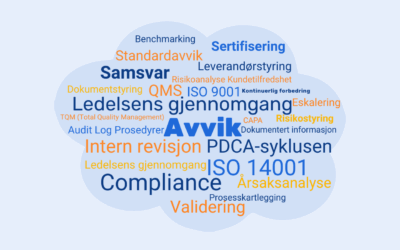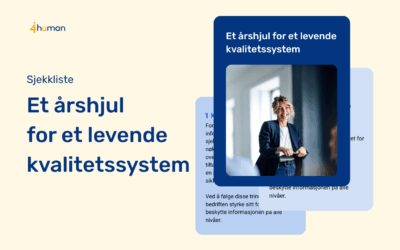Anchoring HSE in the workplace: How to succeed with incident management

How to succeed with incident management
Health, safety and environment (HSE) is a central part of any business – regardless of industry. One of the most important components of HSE work is incident management , which is about detecting, reporting, correcting and preventing violations of HSE regulations. When HSE is well-rooted in the organization, reported incidents become a source of learning and improvement – not just a problem.
What is an HSE incident?
An HSE incident is an unwanted or unexpected work-related situation that has either led to, or may lead to, damage to people, the environment or material things.
- A non-conformity occurs when there is a violation of laws, regulations and/or internal procedures.
- An observation is a recording of a situation, action or condition that can affect HSE either positively or negatively.
- An improvement proposal is an initiative that aims to reduce risk, improve the working environment, increase safety or strengthen environmental considerations.
Understanding the differences and being able to handle small and large incidents effectively is crucial to being able to detect and handle situations early. It is not only about following laws and regulations, but also about ensuring that the workplace is safe for everyone.
Examples of HSE incidents:
- Personal injury
- Near miss
- Environmental incident
- Psychosocial conditions
- Positive/negative observations
- Suggested improvements
Deviations are anything that deviates from laws, rules and procedures – and should not be confused with normal variations in the working day.
Why is incident management important?
Handling large and small incidents is a key part of systematic HSE work. When handled well, it helps to reduce the risk of accidents and injuries, and to improve the working environment over time. It also gives the business the opportunity to learn from mistakes and weaknesses, so that appropriate measures can be taken and recurrences can be prevented. Asking questions like “why did this happen?” helps to find the underlying causes, not just the symptoms.
Benefits of good incident management:
- Reduced risk of adverse events
- A safer working environment
- Better external environment
- Increased productivity and goal achievement
Employer's responsibility
The employer's responsibility is enshrined in the Working Environment Act and specified in the Internal Control Regulations. The employer has the overall responsibility for ensuring that the HSE work works in practice. This means ensuring that there are good routines for registering and following up on deviations, and that all employees know how to report them. The employer must also ensure that the necessary tools and training are available so that incidents are not overlooked or forgotten. Digital HSE systems, such as 4human TQM , can make this process easier and more transparent.
The employer must:
- Follow HSE regulations
- Establish a system for recording and handling incidents
- Ensure that employees have the knowledge and tools to report incidents
- Regularly follow up, evaluate and improve the company's system
A digital system can offer functions for reporting, risk assessment and continuous improvement, among other things.
Build a culture of reporting nonconformities
A strong HSE culture is about more than rules and procedures – it is about attitudes, openness and trust. When employees feel safe and willing to report all incidents, the chances of errors and hazards being detected early increase. Management must lead by example and follow up on reported incidents systematically, creating a culture of continuous improvement.
Characteristics of a good HSE culture:
- Transparency and trust
- Low threshold for reporting
- Active involvement from management
- Systematic follow-up and improvement
Registered incidents should be included in the business's risk assessment and used as a basis for measures that reduce future incidents and costs.
In summary
Anchoring HSE in the workplace is about more than following the law – it is about creating a safe and sustainable work culture. When incidents are handled systematically and openly, they become a valuable source of learning and improvement. With the right system and good management anchoring, non-conformance can become a driving force for continuous improvement.
Do you want to know how? 4human TQM can help your company with HSE and non-conformity management? Contact us for a demo or download our HSE E-Book.
E-book: 5 steps to a strong HSE culture
E-book: 5 steps to a strong HSE culture
Related posts
QMS glossary
Here are terms and abbreviations you should know if you work with quality systems (QMS) – whether you are new to the role or...
A year wheel for a living quality system
This checklist is designed to help you make the quality system an integral part of your everyday life. By using a...
11 steps to help you choose the right quality system
Investing in a quality system can quickly become a comprehensive process. For example, imagine buying your dream home....


